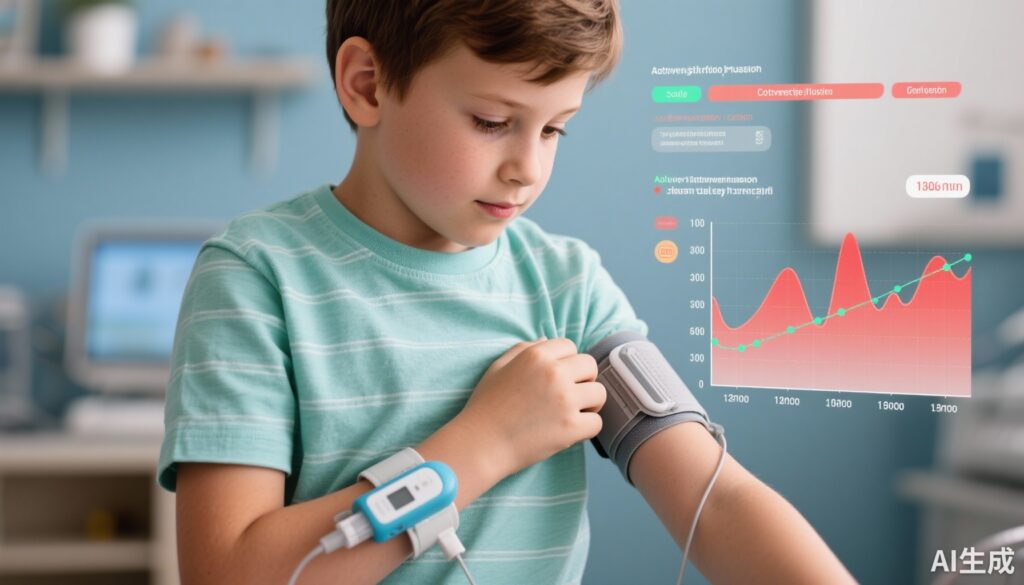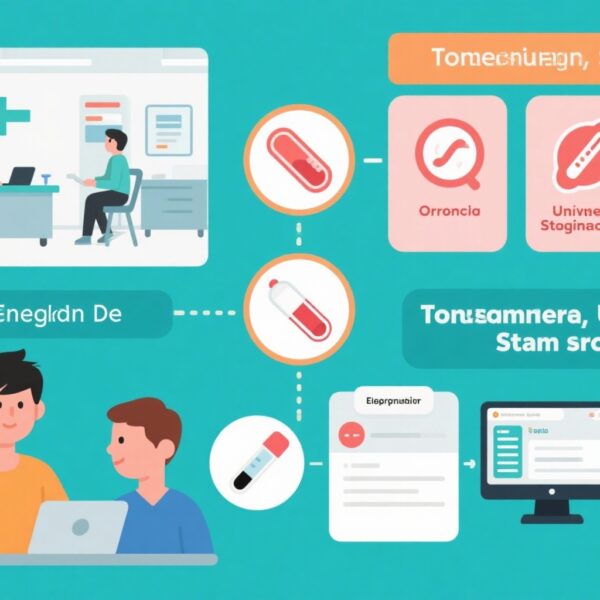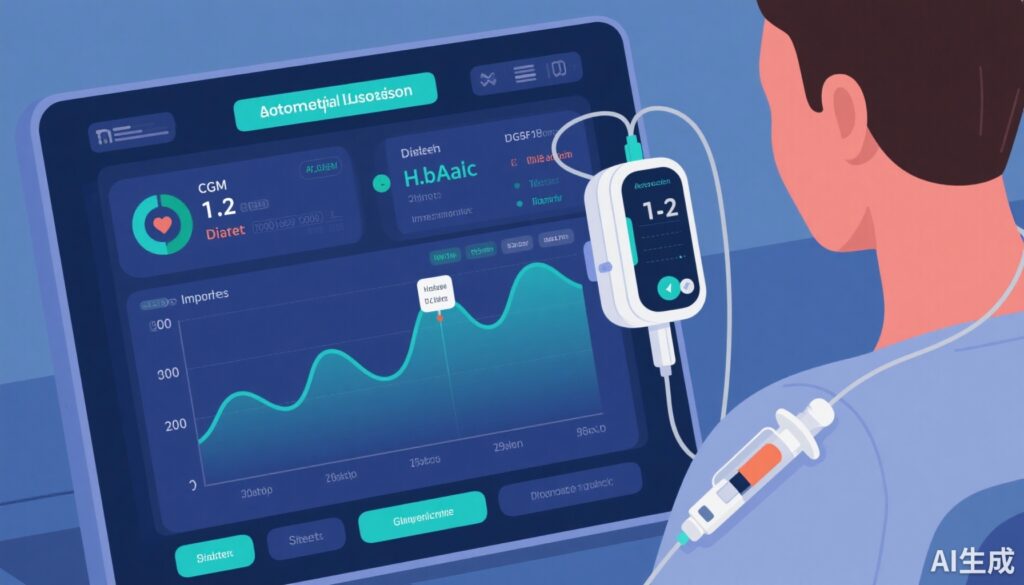Highlight
- Automated insulin delivery (AID) systems improved time in range (TIR) by an average of 11.5% in youth with type 1 diabetes (T1D).
- HbA1c decreased by 0.41%, reflecting improved long-term glycemic control with AID compared to other insulin regimens.
- AID use reduced time spent in hypoglycemia and hyperglycemia, particularly notable during nighttime hours.
- No increased risk of adverse events was observed, affirming the safety profile of AID in pediatric outpatient settings.
Study Background
Type 1 diabetes is a chronic autoimmune condition characterized by pancreas-mediated insulin deficiency, requiring lifelong insulin therapy. Optimal glucose management in children and adolescents is crucial to prevent both acute complications, such as hypoglycemia and diabetic ketoacidosis, and long-term microvascular and macrovascular morbidity. Maintaining glucose within recommended ranges is challenging due to variable insulin sensitivity, growth, psychosocial factors, and adherence issues common in youth. Automated insulin delivery (AID) systems, which integrate continuous glucose monitoring (CGM) with insulin pumps and algorithm-driven insulin dosing, have emerged as advanced technological tools to assist glucose regulation. The progressive adoption of AID systems among young populations has spurred research to robustly evaluate their impact on glycemic control and quality of life compared to conventional insulin regimens.
Study Design
This systematic review and meta-analysis synthesized evidence exclusively from randomized clinical trials (RCTs) published between January 2017 and March 2025. The inclusion criteria restricted eligible studies to those conducted in outpatient settings involving youth aged 6 to 18 years diagnosed with type 1 diabetes. Interventions compared AID systems to any other insulin regimen (including multiple daily injections and sensor-augmented pumps) for a minimum duration exceeding 48 hours. Two independent reviewers performed literature screening, data extraction, and quality assessment following PRISMA standards, ensuring methodological rigor and reproducibility. Key outcome measures focused on time in range (TIR), defined as percentage time glucose levels were within 70 to 180 mg/dL (3.9 to 10 mmol/L), and glycated hemoglobin (HbA1c) levels, a marker of average glucose control over prior months. Secondary outcomes included hypoglycemia (180 mg/dL), nocturnal glucose control, adverse events, and quality of life metrics where reported.
Key Findings
From an initial pool of 2363 citations, 11 RCTs comprising 901 participants (median age 12 years, range 10.8–15.9) met inclusion criteria. The mean baseline HbA1c was 8.4%, with an average TIR of 51%. Intervention durations averaged approximately 31 weeks.
Random-effects meta-analysis demonstrated that AID systems were associated with a statistically and clinically significant reduction in HbA1c by 0.41% (95% CI, -0.58% to -0.25%). This magnitude of improvement is clinically meaningful given that even modest HbA1c reductions translate into decreased risk of microvascular complications. Correspondingly, TIR improved by 11.5% (95% CI, 9.3% to 13.7%), signifying enhanced glucose stability with fewer excursions outside target range. Nighttime TIR increased substantially by 19.7% (95% CI, 17.0% to 22.4%), highlighting improved overnight control which is often more challenging and critical to prevent nocturnal hypoglycemia.
Furthermore, AID use reduced hypoglycemia exposure by 0.32% time (about 5 minutes per day) (95% CI, -0.60% to -0.03%) and hyperglycemia by 10.8% (95% CI, -14.4% to -7.2%), with nighttime hyperglycemia reduced by 14.4%. These improvements indicate a dual benefit of AID technology in mitigating both high and low glucose extremes, thereby enhancing safety and quality of glucose regulation.
Importantly, no increase in adverse events, including severe hypoglycemia or diabetic ketoacidosis, was observed in AID compared to control groups, confirming the safety of these systems in real-world ambulatory pediatric settings. Regarding quality of life (QOL), data were limited, with only two studies providing such measures, underscoring a critical gap for future research to understand patient-centered outcomes and psychosocial benefits or challenges.
Expert Commentary
Automated insulin delivery represents a paradigm shift in T1D management by leveraging real-time glucose sensing and algorithmic insulin titration to emulate physiologic insulin secretion. The present meta-analysis consolidates emerging evidence that AID is not only efficacious in optimizing glucose metrics but also safe in youth—a traditionally challenging demographic due to developmental and behavioral factors affecting diabetes self-care. The improvement in nighttime glucose control is particularly valuable, reducing risks of unnoticed hypoglycemia which can be life-threatening.
Nevertheless, the heterogeneity of included RCTs—varying in device models, study duration, and baseline glycemic control—warrants cautious interpretation. The modest reduction in HbA1c may also reflect a ceiling effect since participants already had suboptimal glycemic control at baseline. Moreover, the lack of robust data on quality of life, user satisfaction, cost-effectiveness, and long-term metabolic outcomes signals areas needing dedicated investigation.
Clinicians should weigh device accessibility, patient/family preferences, and educational support when considering AID initiation. Integration of behavioral and psychosocial interventions remains essential to maximize adherence and real-world effectiveness of technological therapies.
Conclusion
This rigorous systematic review and meta-analysis provides compelling evidence that automated insulin delivery systems improve glucose control parameters—such as HbA1c and time in range—in children and adolescents with type 1 diabetes while reducing hypoglycemia and hyperglycemia without increasing adverse events. These findings support broader implementation of AID technology in pediatric diabetes care to optimize glycemic outcomes and potentially reduce long-term complications. Future research should focus on patient-reported outcomes, device usability, and cost-effectiveness to guide clinical decision-making and health policy. Comprehensive strategies integrating AID systems with holistic diabetes management are poised to enhance the quality of life and disease prognosis for youth living with type 1 diabetes.
Funding and Clinical Trials Registration
No specific funding source was reported for the systematic review. The included randomized clinical trials were conducted under various institutional protocols; trial registration details can be found within individual studies.
References
1. de Visser HS, Waraich S, Chhabra M, et al; TEAM Trial Patient Coresearchers. Automated Insulin Delivery Systems and Glucose Management in Children and Adolescents With Type 1 Diabetes: A Systematic Review and Meta-Analysis. JAMA Pediatr. 2025 Sep 8:e252740. doi: 10.1001/jamapediatrics.2025.2740.
2. Cameron FJ, Rossini AA. Type 1 diabetes in children and adolescents: recent advances in diabetes technology. Lancet Child Adolesc Health. 2022;6(7):460-472.
3. Battelino T, Danne T, Bergenstal RM, et al. Clinical Targets for Continuous Glucose Monitoring Data Interpretation: Recommendations From the International Consensus on Time in Range. Diabetes Care. 2019;42(8):1593-1603.
4. Kovatchev B, Anderson SM, Raghinaru D, et al. Clinical Practice Considerations for Automated Insulin Delivery Systems in Type 1 Diabetes. Diabetes Technol Ther. 2023;25(2):96-104.






